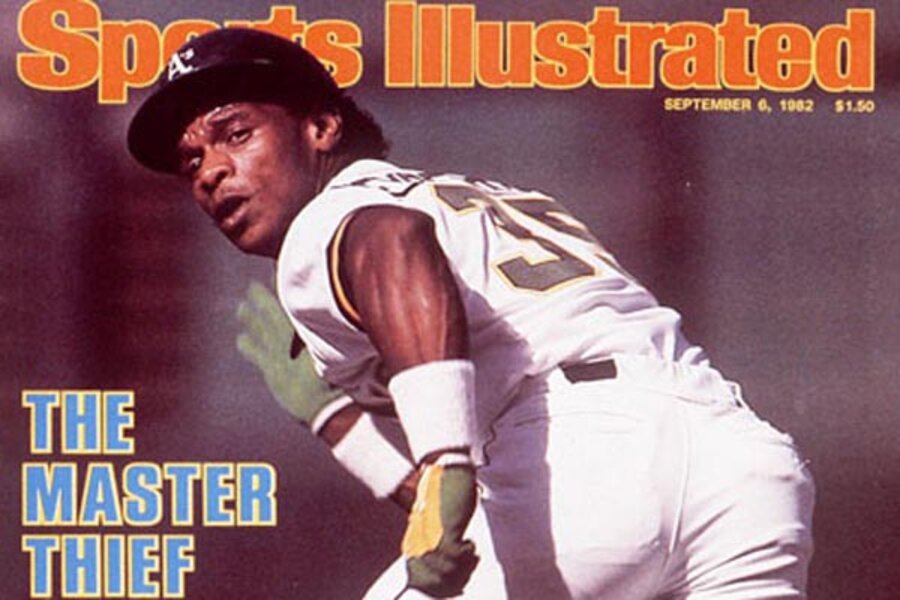Top hitter: Wade Boggs (Boston Red Sox), .349 avg.
Top slugger: Reggie Jackson (California Angels) and Gorman Thomas (Milwaukee Brewers), 39 HRs
Top pitcher: Steve Carlton (Philadelphia Phillies), 23 wins
NL MVP: Dale Murphy (Atlanta Braves), OF
AL MVP: Robin Yount (Milwaukee Brewers), SS
World Series: St. Louis Cardinals defeat the Milwaukee Brewers, 4-3.
If there were a record for the best attendance on a cold day, fans of the Cleveland Indians may have set it on April 10, when 63,443 showed up an Opening Day game at Municipal Stadium. Game time temperature was 38 degrees F., but the wind show made it seem like 17 degrees.
Rickey Henderson shattered Lou Brock’s stolen base record, set in 1974 with 118, with 130 steals. Oakland manager Billy Martin called Henderson the most exciting player since his former Yankee teammate Mickey Mantle. The A’s “Man of Steal” set the record at age 23, but went on to play 21 more seasons, also overtaking Brock’s record for career steals with 1,406 compared with Brock’s total of 938.
For the first time, the All-Star Game was played outside the United States, at Olympic Stadium in Montreal. Four Expos were in the National League starting lineup: outfielders Tim Raines and Andre Dawson, catcher Gary Carter, and pitcher Steve Rogers. The National League won, 4-1. The only other All-Star Game played in Canada occurred in Toronto in 1991.
Making it another noteworthy season for Canada, Chicago Cubs pitcher Ferguson Jenkins, the first and only Canadian ever elected to the Baseball Hall of Fame, reached 3,000 career strikeouts. In 2010, he was honored with his own Canadian postage stamp.
Pitcher Gaylord Perry, who had long been suspected of throwing illegal spitballs, was for the first time ejected from a game after being caught with a “foreign substance” on the ball (spitballs were outlawed in 1920). Despite the cloud that hung over Perry’s pitching practices, he managed to make the Hall of Fame in 1991 and reached the 300-win milestone in 1982 with the Seattle Mariners.
On Aug. 4, outfielder Joel Youngblood became the only player in major league history to play on two different teams on the same day and get hits off a pair of future Hall of Fame pitchers. As a New York Met in the afternoon, he singled off the Cubs’ Ferguson Jenkins at Wrigley Field. Before the game was over he was traded to Montreal. Youngblood joined the Expos that night in Philadelphia, where he collected a hit off Steve Carlton.
The Cincinnati Reds went from having the best record in baseball in 1981 to being the game’s second worst team in 1982, when they finished 28 games behind the Atlanta Braves in the National League’s Western Division. It was the team’s first last-place finish since the 1930s. Perhaps the Reds were still in a funk over what happened in 1981, when they didn’t even make the playoffs despite having the league’s best overall record. That’s because they didn’t win their division in either half of a split season-format, created when a players strike interrupted play in mid-season.
Atlanta slugger Dale Murphy won the first of two straight National League MVP honors. Oddly, however, he never has been elected to the Hall of Fame, making him the only multiple MVP winner in either league besides Roger Maris never enshrined.
Milwaukee won its first World Series since 1957, and the only one as an American League team playing in the so-called Suds Series against St. Louis, matching cities associated with the beer industry.







